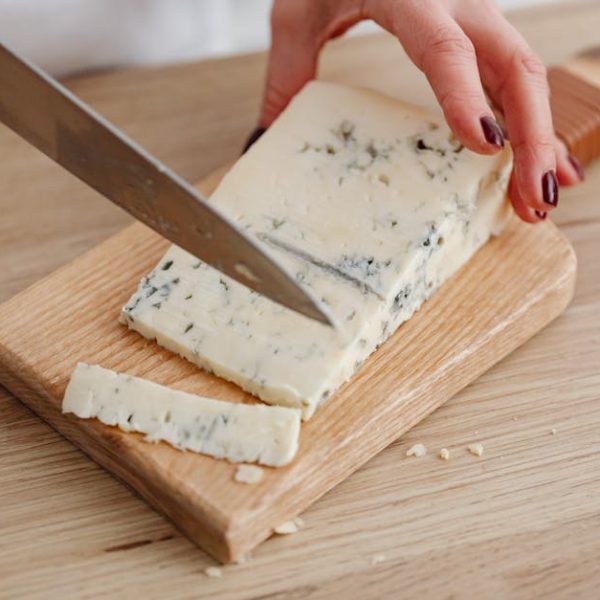We all love a good charcuterie board topped with our favorite slabs of cheese, and goat cheese undoubtedly stands out in the mix. Its tangy and robust flavor can effortlessly enhance a dish, but maintaining that freshness and flavor can be a tricky business. No one fancies a taste of spoilt goat cheese – not to mention the wasted dollars. This article aims to provide actionable advice on preserving goat cheese, prolonging its lifespan, and ensuring optimal taste every time you serve it, from the nuanced understanding of what makes goat cheese special to expert storage tips.
Understanding Goat Cheese
Savoring goat cheese extends beyond enjoying a tangy explosion of flavors and exploring its rich diversity. Its uses and benefits are vast – from garnishing salads to adding depth in baked goods. Plus, it’s a great source of protein, calcium, and beneficial fatty acids. While each type of goat cheese offers a unique taste and texture, their freshness remains pivotal to their quality and overall culinary experience. Let’s dive into the world of goat cheese:
- Feta: Famous for its crumbly texture and potent brininess.
- Chevre: Creamy and soft, known for its fresh, tart flavor.
- Bucheron: Features a dual texture – creamy at the core and crumbly at the edges.
- Gouda: Hard, with a sweet and caramel-like flavor.
It’s crucial to remember that the type of goat cheese you choose depends on its intended use in your recipe. A creamier version would be excellent for spreads or dips, while a harder variety complements a cracker or fruit plate.
What Determines Goat Cheese Shelf Life
Now, let’s bust the most prevalent goat cheese myth: all forms of this dairy delight are not created equal when it comes to shelf life. Several factors influence goat cheese’s longevity, such as variety, type of packaging, and storage conditions.
Soft cheeses like Chevre or Feta, for example, have a considerable moisture content and less preservatives, making them susceptible to spoilage quicker than hard varieties like Gouda, which can retain quality for several months if stored correctly. The packaging also counts. Cheese stored in brine or vacuum-sealed packs lasts longer than those packed differently.
ICON: Pro-Tip: Watch out for signs of spoilage – separation of whey from the cheese lump, blue-green molds, or a decayed odor.
To gain a comparative view, let’s differentiate between the shelf-lives of hard, semisoft and soft goat cheeses:
| Cheese Type | Shelf Life (Refrigerated) |
|---|---|
| Hard (like Gouda) | 6-9 months |
| Semisoft (like Tomme) | 2-3 months |
| Soft (like Chevre) | 1-2 weeks |
Every type of goat cheese varies in terms of longevity, and understanding these differences is the first step to making the most of your dairy delight. In part two, we will dive into the essential storage tips for prolonging goat cheese’s freshness.
Essential Storage Tips for Prolonging Goat Cheese Freshness
Storing goat cheese properly can add days or weeks to its longevity. By keeping an ideal environment for your cheese, you can maintain maximum taste and texture for a more extended period.
Here’s a simple, convenient, step-by-step guide to effectively store goat cheese:
- Check the packaging: Keep the cheese in its original packaging – it’s specifically designed to ensure the cheese remains fresh.
- Wrap it: If the cheese isn’t vacuum-sealed, wrap it in cheese paper, wax paper, or parchment paper before storing it.
- Store cold: Keep it in the refrigerator as most goat cheese varieties preserve best at lower temperatures (between 35°F to 45°F).
- Keep at consistent temperature: Avoid frequent temperature changes. Don’t keep it on the door of your fridge; it’s the warmest part!
- Limit exposure to air: The more the cheese is exposed to air, the faster it will dry out or absorb odors from the fridge, affecting its taste.
Now, let’s elaborate on the advantages and drawbacks of common storage methods:
- Refrigeration: Effective for short term storage, but can cause the cheese to dry out over time.
- Freezing: Suitable for hard goat cheeses, but can alter the texture of soft cheeses.
- Cheese Cave: Ideal for storing cheese without altering its flavor or texture, but can be expensive and take up space.
Handling and Serving Goat Cheese to Preserve Freshness
How you handle and serve your goat cheese can have a significant impact on its freshness. Maintain its quality and flavor from storage to the dinner table by following these best practices.
- Use cheese tools: Use a cheese knife or cheese plane to reduce unnecessary contact and contamination.
- Cut just before serving: To minimize air exposure, only cut the amount of cheese you plan to serve.
- Avoid handling: If possible, avoid touching the cheese directly – use wax paper or a cheese pick instead.
It’s often a question of what to use for storing the leftover cut cheese. Both cloth wrap and resealable bags have their merits and demerits:
| Storage Method | Pros | Cons |
|---|---|---|
| Cloth Wrap | Allows the cheese to breathe, maintaining texture and flavor. | Doesn’t provide a complete barrier, increasing risk of absorption of fridge odors. |
| Resealable Bags | Prevents odor absorption. | Can cause condensation which leads to rapid mold growth. |
Can Expired Goat Cheese be Consumed?
It’s a question many guiltily ask – can you consume goat cheese past its expiry date? It’s crucial to note that quality, not safety, is usually the concern with expired cheese.
ICON: Pro-Tip: Check for signs of spoilage like a rotten smell, unusual mold colors, or slimy texture rather than focusing solely on the expiry date.
With safety always in mind, remember the best practice to dispose of any cheese that seems spoiled, for it can cause severe foodborne illnesses. A simple rule of thumb: When in doubt, throw it out.
With these tips and tricks, you’re set to enjoy your favorite goat cheese down to the very last, delicious bite. Remember, being informed about the nature of the goat cheese you choose and storing it properly is half the battle won. Enjoy your cheese adventures!
Key Takeaway:
- Goat cheese comes in various types, each with distinct flavors and textures, suitable for diverse culinary uses.
- The shelf-life of goat cheese varies depending on its variety, packaging type, and storage conditions.
- Storing goat cheese properly can significantly extend its freshness and overall shelf-life. Strategies include using specific packaging, maintaining consistent, cold temperatures, and minimizing exposure to air.
- Handling and serving practices, like cutting just before serving and using specific tools, can help preserve goat cheese’s freshness.
- Goat cheese past its expiry date can sometimes still be consumed, but any signs of spoilage should prompt immediate disposal.
Your love for goat cheese needn’t be marred by concerns of it spoiling quickly. By understanding the factors determining its shelf-life and applying proper storage, handling, and serving methods, you can enjoy your favorite tangy delight for longer. Always remember, when it comes to consuming expired cheese, safety comes first. Be mindful of signs of spoilage and don’t risk your health over doubt.
FAQs
Q: Can I freeze goat cheese to extend its shelf life?
A: Yes, although primarily advised for hard goat cheeses. Freezing can alter the texture of soft cheeses.
Q: What is the best way to store cut goat cheese?
A: Wrapped in cheese, wax, or parchment paper in a resealable bag is a good way ensuring it doesn’t absorb fridge odors or form condensation.
Q: Does cooked or baked goat cheese last longer than fresh?
A: Cooked or baked goat cheese may last longer, but remember, its shelf life in a cooked dish depends on other ingredients too.
Q: Can I ignore small spots of mold on my goat cheese?
A: It’s better to be safe than sorry. Unless the mold is a natural part of the cheese, consider its presence an indication of spoilage.
Q: What’s the ideal temperature for storing goat cheese?
A: Most goat cheeses preserve best at lower temperatures, between 35°F to 45°F.
We hope this guide has been helpful. Feel free to spread the word about preserving goat cheese and explore more posts on our site for additional guidance and tips!






